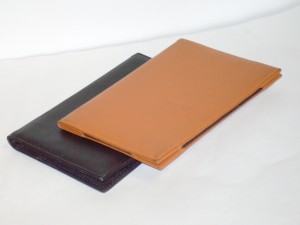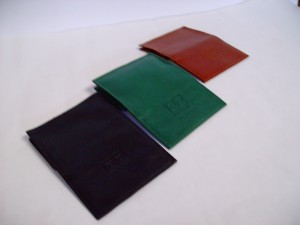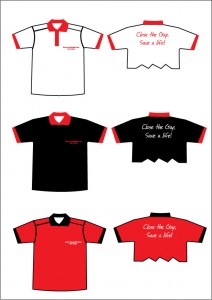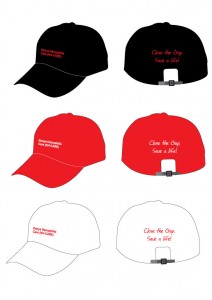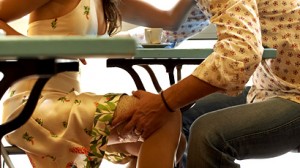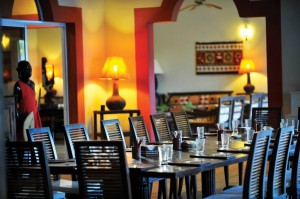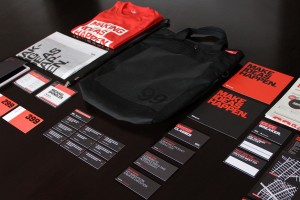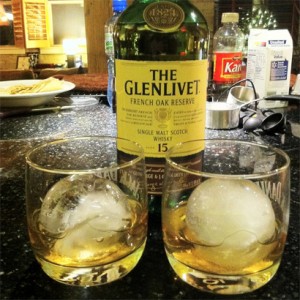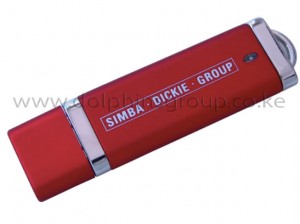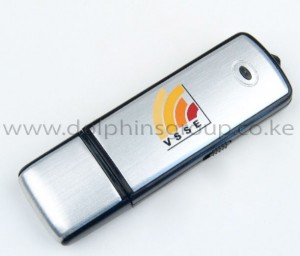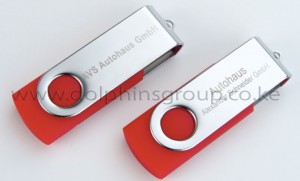Polo shirts,Tshirts,leather folders manufacturers and resellers Nairobi Kenya
Branding during the Industrial Economy
During the Industrial Revolution (1830-70) a clear shift was seen with the arrival of brands such as C&A 1841 and Levi’s 1850 (clothing sector); Tabasco 1868 and Heinz 1869 (fast moving consumer goods FMCG sector).
However, in those days the power of the distribution chain was in the hands of the wholesale traders and as a result most producers made articles without brand names, for which little or no advertising was done (King and Bullmore 1974; Chernatony and McDonald 1992).
In the second half of the nineteenth century, the construction of railways and sea routes were important impulses for the development of the manufacturer-owned brand. The consumer was now given a choice between different alternatives: locally manufactured products vs. products imported via railways and waterways. At the same time there was an increasing demand for prepackaged articles which guaranteed a certain constant price and quality. This increasing supply of goods and consumer demand, made it increasingly necessary to give manufactured goods a brand name, so that one manufacturer’s products could be distinguished from those of other manufacturers (Murphy 1990).
By the end of the nineteenth century the manufacturer-owned brand started to blossom as the power in the distribution chain shifted more and more in the direction of the producer. This is reflected on the arrival of brands from the FMCG sector such as Lever’s “Pure Honey Soap” 1874 (today Unilever) and Procter’s “Ivory Soap” 1879 (today Procter and Gamble P&G); Coca-Cola 1886 and Pepsi-Cola 1898 (soft drinks sector); Kodak 1887 and Philips 1891 (consumer electronics sector).
From this brief background, we can conclude that “Branding” surged as a need to distinguish a product and make it identifiable to a consumer through the use of a name or symbol. Following a trademark was created as a legal mechanism to protect the right of a company to claim ownership of a product name and symbol. Finally as more brands appeared it was necessary to advertise them and describe their unique characteristics.
For all your branding needs on wholesale and retail….
L584-off UN Avenue, Gigiri.
P.O. Box 27859 00100,
Nairobi, Kenya.
Tags: banners design, banners printers in nairobi kenya, banners stands makers in nairobi kenya, branded flash disk, Branded flash disks resellers in Kenya, branded flash drives suppliers in nairobi kenya, branded leather folders, Branding, Branding ideas, Branding Items suppliers in kenya, branding solutions in nairobi kenya, Branding tips in Kenya, Brochures designers and printers in Nairobi kenya, bulk flash drives branding, bulk printers and desiners in nairobi kenya, Business Cards designers and printers in Nairobi kenya, conference bags manufacturers and makers in nairobi kenya, conference folders manufacturers and makers in nairobi kenya, conference items makers and manufacturers in nairobi kenya, conference items manufacturers in nairobi kenya, designers and printers in Nairobi kenya, diaries makers and printers in nairobi kenya, end of year gift items makers and manufacturers, envelops branding designers and printers in Nairobi kenya, Flash disk branding in nairobi kenya, fliers design and printing, fliers desiners and printers in nairobi kenya, Flyers designers in Nairobi kenya, folders manufacturers, folders manufacturers and makers in nairobi kenya, gigt items makers and manufacturers in nairobi kenya, graphic design and printing, graphics designers in nairobi kenya, Kenya leading branding company, marketing materials printers in nairobi kenya, marketing tools, Newspapers Adds designers and printers in Nairobi kenya, outdoor and indoor advertisers in nairobi kenya, pen printers and manufacturers in nairobi kenya, polo shirts branding in nairobi kenya, Posters designers and printers in Nairobi kenya, printing solutions in nairobi kenya, Professional Logos designers and printers in Nairobi kenya, promotional items reseller and distributors in kenya. T-shirt branding and manufacturing, pullup banners makers in nairobi kenya, quality designs and prints, Roll up banners makers and manufactures in nairobi, Simple Branding Items, t shipt makers and manufactures in nairobi kenya, t shirt designers and printers in nairobi kenya, wholesale flash drives, wholesale flash drives resellers in kenya, wholesales flash disk resellers in nairobi
Branding Basics for You…
Branding is one of the most important aspects of any business, large or small, retail or B2B. An effective brand strategy gives you a major edge in increasingly competitive markets. But what exactly does “branding” mean? How does it affect a small business like yours?
Simply put, your brand is your promise to your customer. It tells them what they can expect from your products and services, and it differentiates your offering from your competitors’. Your brand is derived from who you are, who you want to be and who people perceive you to be.
Are you the innovative maverick in your industry? Or the experienced, reliable one? Is your product the high-cost, high-quality option, or the low-cost, high-value option? You can’t be both, and you can’t be all things to all people. Who you are should be based to some extent on who your target customers want and need you to be.
The foundation of your brand is your logo. Your website, packaging and promotional materials–all of which should integrate your logo–communicate your brand.
Brand Strategy & Equity
Your brand strategy is how, what, where, when and to whom you plan on communicating and delivering on your brand messages. Where you advertise is part of your brand strategy. Your distribution channels are also part of your brand strategy. And what you communicate visually and verbally are part of your brand strategy, too.
Consistent, strategic branding leads to a strong brand equity, which means the added value brought to your company’s products or services that allows you to charge more for your brand than what identical, unbranded products command. The most obvious example of this is Coke vs. a generic soda. Because Coca-Cola has built a powerful brand equity, it can charge more for its product–and customers will pay that higher price.
The added value intrinsic to brand equity frequently comes in the form of perceived quality or emotional attachment. For example, Nike associates its products with star athletes, hoping customers will transfer their emotional attachment from the athlete to the product. For Nike, it’s not just the shoe’s features that sell the shoe.
Defining Your Brand
Defining your brand is like a journey of business self-discovery. It can be difficult, time-consuming and uncomfortable. It requires, at the very least, that you answer the questions below:
- What is your company’s mission?
- What are the benefits and features of your products or services?
- What do your customers and prospects already think of your company?
- What qualities do you want them to associate with your company?
Do your research. Learn the needs, habits and desires of your current and prospective customers. And don’t rely on what you think they think. Know what they think.
Because defining your brand and developing a brand strategy can be complex, consider leveraging the expertise of a nonprofit small-business advisory group or a Small Business Development Center .
Once you’ve defined your brand, how do you get the word out? Here are a few simple, time-tested tips:
Get a great logo. Place it everywhere.
Write down your brand messaging. What are the key messages you want to communicate about your brand? Every employee should be aware of your brand attributes.
Integrate your brand. Branding extends to every aspect of your business–how you answer your phones, what you or your salespeople wear on sales calls, your e-mail signature, everything.
Create a “voice” for your company that reflects your brand. This voice should be applied to all written communication and incorporated in the visual imagery of all materials, online and off. Is your brand friendly? Be conversational. Is it ritzy? Be more formal. You get the gist.
Develop a tagline. Write a memorable, meaningful and concise statement that captures the essence of your brand.
Design templates and create brand standards for your marketing materials. Use the same color scheme, logo placement, look and feel throughout. You don’t need to be fancy, just consistent.
Be true to your brand. Customers won’t return to you–or refer you to someone else–if you don’t deliver on your brand promise.
Be consistent. I placed this point last only because it involves all of the above and is the most important tip I can give you. If you can’t do this, your attempts at establishing a brand will fail.
Good Luck
For all of your events Items branding please feel free to contact;
Dolphins Business Relations Ltd.
Town Office-View Park Towers ,10th Fl ,Utalii Lane /
L584-off UN Avenue, Gigiri.
P.O. Box 27859 00100, Nairobi, Kenya.
Email: services@dolphinsgroup.co.ke
Website: http://www.dolphinsgroup.co.ke/business.php
Tel: +254 20 2211362 / 382
Cell: +254 -712 -636 404
Fax: +254 20 2211386
Dolphins Group
Never seen a Tomorrow,Do It Today!
Tags: banners design, banners printers in nairobi kenya, banners stands makers in nairobi kenya, branded flash disk, Branded flash disks resellers in Kenya, branded flash drives suppliers in nairobi kenya, branded leather folders, Branding, Branding ideas, Branding Items suppliers in kenya, branding solutions in nairobi kenya, Branding tips in Kenya, Brochures designers and printers in Nairobi kenya, bulk flash drives branding, bulk printers and desiners in nairobi kenya, Business Cards designers and printers in Nairobi kenya, conference bags manufacturers and makers in nairobi kenya, conference folders manufacturers and makers in nairobi kenya, conference items makers and manufacturers in nairobi kenya, conference items manufacturers in nairobi kenya, designers and printers in Nairobi kenya, diaries makers and printers in nairobi kenya, end of year gift items makers and manufacturers, envelops branding designers and printers in Nairobi kenya, Flash disk branding in nairobi kenya, fliers design and printing, fliers desiners and printers in nairobi kenya, Flyers designers in Nairobi kenya, folders manufacturers, folders manufacturers and makers in nairobi kenya, gigt items makers and manufacturers in nairobi kenya, graphic design and printing, graphics designers in nairobi kenya, Kenya leading branding company, marketing materials printers in nairobi kenya, marketing tools, Newspapers Adds designers and printers in Nairobi kenya, outdoor and indoor advertisers in nairobi kenya, pen printers and manufacturers in nairobi kenya, polo shirts branding in nairobi kenya, Posters designers and printers in Nairobi kenya, printing solutions in nairobi kenya, Professional Logos designers and printers in Nairobi kenya, promotional items reseller and distributors in kenya. T-shirt branding and manufacturing, pullup banners makers in nairobi kenya, quality designs and prints, Roll up banners makers and manufactures in nairobi, Simple Branding Items, t shipt makers and manufactures in nairobi kenya, t shirt designers and printers in nairobi kenya, wholesale flash drives, wholesale flash drives resellers in kenya, wholesales flash disk resellers in nairobi
New ways to refreash your Brand…
Creating a thriving business takes a hefty measure of down-to-earth planning and a heaping dose of real-world savvy. But creativity is the secret ingredient that will set you apart. Below are 10 ways to invent your brand and make it your own.
1. Make Your Name Memorable
A business card is a pint-sized preview of your work. Is your company innovative and artistic? Do you hope to convey experience and reliability? You can help forge an unforgettable first impression by learning how to design effective business cards or by putting your own stamp on do-it-yourself business cards.
2. Offer Coupons
People are keen on coupons.
Designing eye-catching coupons – paper or virtual – can help you create customers, and, with a little luck, grow your own loyal following.
Before you begin selecting fonts and photos, however, remember to read up on the right way to begin. Lahle Wolfe, Women in Business Guide, offers up valuable advice with Tips on How To Design Coupons to Attract More Customers
3. Keep Your Business Fresh
In the midst of helming your business day to day, you may feel overwhelmed at the prospect of heading in new directions. Keeping a list of possibilities on hand can help narrow your focus and ward off stagnation. From window displays to waiting areas,keep your enterprise vibrant and up-to-the-moment.
4. Produce a Marketing Video
We may not be able to predict which videos among the millions online will rocket to world renown, but looking a little closer at those that go viral can help us spot some of the magic (or mayhem). For pointers on producing your own production, developing SEO content for videos, and a fascinating tour of marketing trends and tactics through the years, head over to Tips For Creating Viral Marketing Videos.
5. Set the Style
If a business card is a glimpse into a company, a web site is a virtual doorway.
6. Connect Co-Workers
Forming a diverse workplace where men and women represent a spectrum of ages, backgrounds, and personalities is the ultimate goal of forward-thinking companies. Whether your teammates are meeting new members or you’re heading a training session, creating a warm, welcoming atmosphere is the first order of business. You can begin by selecting from an array of Icebreakers, Energizers, and Activities that can help make your employees feel more at home.
7. Keep Inspiration in Sight
They may be trendy now, but inspiration boards (also called mood boards or motivation boards) have long stood the test of time on the walls of garrets and studios, where artists pin up collages of images that strike a chord with their creativity. Try hanging a composition of meaningful artwork, quotes, photos, lists and more in your home or office to keep what kindles new ideas in view: Get Inspired With a Motivation Board!
8. Create the Right Atmosphere
A mirror in just the right place, sweet-smelling herbs, and a room with a view.
9. Be Inventive
Looking to fire up your neurons and start new ideas cooking? Try thinking backwards.
10. Take a Breather
A healthy home life and workplace is essential to us all. While we can’t avoid every last-minute meeting or schedule conflict that comes along, we can help put our priorities in perspective, safeguard our health and fortify ourselves by enjoying our favorite tension-tamers each day.
We welcome your ideas and needs…
Dolphins Business Relations Ltd.
Town Office-View Park Towers ,10th Fl ,Utalii Lane /
L584-off UN Avenue, Gigiri.
P.O. Box 27859 00100, Nairobi, Kenya.
Email: services@dolphinsgroup.co.ke
Website: http://www.dolphinsgroup.co.ke/business.php
Tel: +254 20 2211362 / 382
Cell: +254 -712 -636 404
Fax: +254 20 2211386
Dolphins Group
Tags: banners design, banners printers in nairobi kenya, banners stands makers in nairobi kenya, branded flash disk, Branded flash disks resellers in Kenya, branded flash drives suppliers in nairobi kenya, branded leather folders, Branding, Branding ideas, Branding Items suppliers in kenya, branding solutions in nairobi kenya, Branding tips in Kenya, Brochures designers and printers in Nairobi kenya, bulk flash drives branding, bulk printers and desiners in nairobi kenya, Business Cards designers and printers in Nairobi kenya, conference bags manufacturers and makers in nairobi kenya, conference folders manufacturers and makers in nairobi kenya, conference items makers and manufacturers in nairobi kenya, conference items manufacturers in nairobi kenya, designers and printers in Nairobi kenya, diaries makers and printers in nairobi kenya, end of year gift items makers and manufacturers, envelops branding designers and printers in Nairobi kenya, Flash disk branding in nairobi kenya, fliers design and printing, fliers desiners and printers in nairobi kenya, Flyers designers in Nairobi kenya, folders manufacturers, folders manufacturers and makers in nairobi kenya, gigt items makers and manufacturers in nairobi kenya, graphic design and printing, graphics designers in nairobi kenya, Kenya leading branding company, marketing materials printers in nairobi kenya, marketing tools, Newspapers Adds designers and printers in Nairobi kenya, outdoor and indoor advertisers in nairobi kenya, pen printers and manufacturers in nairobi kenya, polo shirts branding in nairobi kenya, Posters designers and printers in Nairobi kenya, printing solutions in nairobi kenya, Professional Logos designers and printers in Nairobi kenya, promotional items reseller and distributors in kenya. T-shirt branding and manufacturing, pullup banners makers in nairobi kenya, quality designs and prints, Roll up banners makers and manufactures in nairobi, Simple Branding Items, t shipt makers and manufactures in nairobi kenya, t shirt designers and printers in nairobi kenya, wholesale flash drives, wholesale flash drives resellers in kenya, wholesales flash disk resellers in nairobi
10 Ideas for Event Branding on a Small Budget….
Successful event branding involves more than just slapping your company logo onto a few decorations. It’s about creating a unique experience for the attendees, one that keeps them engaged while also consistently reminding them of your brand.
This may be a challenge if you’re on a tight budget. But there are several easy solutions that let you brand your conference, gala dinner, launch party or other event without breaking the bank. Here are some simple ideas for branding an event.
-
Invitations
This simple but creative invitation for a Starbucks sample tasting even includes a couple of free forks.
Here’s an opportunity to introduce people to your event brand before they even actually attend. Invitations can be used to intrigue people and get them excited about your event. Including a logo and design that complements your branding strategy gives recipients a taste of what they can expect.
Invitations can be professionally designed at a fairly low cost. If your guest list is relatively small and you’re willing to invest time rather than money, you could try creating hand-written invitations. This is a deeply personal touch that makes for intimate, down-to-earth event branding.
Particularly sentimental patrons might hold on to your invitation as a souvenir, especially if it has a cool design. This provides your patrons with a lasting reminder of your branded event.
-
Flyers and posters
Depending on the event you have planned and whether it’s a private or public affair, you might want to advertise using signage or handouts. Print marketing collateral is an inexpensive and easy way to get the word out. You can cheaply distribute it through direct mail or even wild posting.
Be creative with your flyers, banners or posters and find some way to tie their design into your event’s overall theme. Keeping your branding consistent gives your event a sense of legitimacy and makes it truly memorable.
-
Social media
Live-tweeting your event can help to engage people, even those who don’t show up in person.
Here’s one way to promote and brand an event without spending a dime. As more and more of the business world moves online, sites like Facebook, Twitter and Youtube can be an invaluable part of your marketing plan.
Inviting people to your event via Facebook is quite common, but it doesn’t have to stop there. Consider using social media before, during, and after your event. You can build anticipation and buzz, live-tweet with up-to-minute details, and post photos or videos the day after. Just make sure that your online presence is written in the same voice as the rest of your brand marketing.
-
Food and drink
Whether you’re serving a full meal or just hors d’oeuvres, food and beverages are a vital factor in your event branding plan. Serve refreshments that complement your event’s brand, theme and color scheme.
For example, if the color red is a recurring element in your marketing material, you might want to serve red-colored cocktails. You could even make a baked dessert with icing in the shape of your company logo. Making your refreshments match your brand shouldn’t cost much, but it makes a big impression on guests.
-
Drinkware
A champagne flute branded with your company or event’s logo makes for a tasteful accent.
Printed cups and glasses come in a variety of interesting styles, and can easily be customized with a logo or design that matches your brand. Many drinkware items can be purchased for less than $0.50 per cup, making this one of the more cost-effective ways to brand an event.
Consider using drinkware that matches the overall tone of your event. For example, stadium cups would be appropriate for a picnic or casual lunch, while an elegant gala might benefit more from classic champagne flutes.
-
Tableware
If you’re serving food at your event, personalized napkins, plates and utensils are subtle and inexpensive ideas for keeping your brand in the spotlight.
Custom tableware lets you associate your company logo with something positive: specifically, a tasty meal. It’s almost like a Pavlov’s dog response; juxtaposing your brand with a benefit (food, in this case) can help to generate interest and goodwill in your guests.
-
Apparel
Certain events (such as conferences or conventions) might benefit from branded clothing such as T-shirts or hats. Personalized apparel items are relatively inexpensive, and they can serve as mementos for your event.
Try using custom apparel as giveaway prizes, party favors or merchandise. With attractive graphic design, wearable marketing collateral can give your brand exposure even after the event is over.
-
Speakers
Sometimes the major attraction of a branded event is a lecture or speech from a qualified speaker. If your planned occasion is a fundraiser or educational experience, a speaker can provide your guests with valuable information.
Hiring a professional lecturer can be expensive, but some individuals are willing to speak at an event at little or no cost (especially if it’s for a good cause). With a little hunting, you may find a low- or non-paid speaker who fits seamlessly with your brand.
-
Environments
Rather than oversaturating the audience with their logo, the Academy Awards is all about creating a distinctive environment.
Often, good event branding is all about looking at the big picture instead of just the individual elements. Your venue, decor and event attractions should all be part of a single, cohesive environment.
For example, look at a famous event like the Academy Awards. Sure, the occasion does have a “logo” of sorts (the golden “Oscar,” which might actually be more of a mascot), but there’s much more to it than that. The entire event is less about overloading people with a logo and more about maintaining a consistent atmosphere. The red carpet, the clothes, the lavish presentation; everything about the Oscars is both instantly recognizable and integral to its overall look and feel.
You definitely don’t need a budget as big as the Oscars, but your event shouldn’t seem like just another day in your guests’ normal everyday life. Try choosing a venue and creating an environment for your guests that immediately makes them aware that they’re entering a different world.
-
Take-away gifts
Give your guests something to remember your event by. Gift bags, promotional products or other takeaways help to cement good memories of your event in the minds of your guests.
Keep your takeaway gifts relevant to your event branding and business plan. For example, a launch party for a beauty care provider might provide free samples of skin cream or conditioner.
Conclusion
These are just a few ideas that allow you to brand an event inexpensively. If done effectively, event branding lets you boost awareness about your product, cause or company throughout the entire occasion and beyond.
Contact us today for your favorable bulk quote and fast deliveries
Dolphins Business Relations Ltd.
Town Office-View Park Towers ,10th Fl ,Utalii Lane /
L584-off UN Avenue, Gigiri.
P.O. Box 27859 00100, Nairobi, Kenya.
Email: services@dolphinsgroup.co.ke
Website: http://www.dolphinsgroup.co.ke/business.php
Tel: +254 20 2211362 / 382
Cell: +254 -712 -636 404
Fax: +254 20 2211386
Dolphins Group
Tags: banners design, banners printers in nairobi kenya, banners stands makers in nairobi kenya, branded flash disk, Branded flash disks resellers in Kenya, branded flash drives suppliers in nairobi kenya, branded leather folders, Branding, branding solutions in nairobi kenya, Brochures designers and printers in Nairobi kenya, bulk flash drives branding, bulk printers and desiners in nairobi kenya, Business Cards designers and printers in Nairobi kenya, conference bags manufacturers and makers in nairobi kenya, conference folders manufacturers and makers in nairobi kenya, conference items makers and manufacturers in nairobi kenya, conference items manufacturers in nairobi kenya, designers and printers in Nairobi kenya, diaries makers and printers in nairobi kenya, end of year gift items makers and manufacturers, envelops branding designers and printers in Nairobi kenya, Flash disk branding in nairobi kenya, fliers design and printing, fliers desiners and printers in nairobi kenya, Flyers designers in Nairobi kenya, folders manufacturers, folders manufacturers and makers in nairobi kenya, gigt items makers and manufacturers in nairobi kenya, graphic design and printing, graphics designers in nairobi kenya, Kenya leading branding company, marketing materials printers in nairobi kenya, marketing tools, Newspapers Adds designers and printers in Nairobi kenya, outdoor and indoor advertisers in nairobi kenya, pen printers and manufacturers in nairobi kenya, polo shirts branding in nairobi kenya, Posters designers and printers in Nairobi kenya, printing solutions in nairobi kenya, Professional Logos designers and printers in Nairobi kenya, promotional items reseller and distributors in kenya. T-shirt branding and manufacturing, pullup banners makers in nairobi kenya, quality designs and prints, Roll up banners makers and manufactures in nairobi, t shipt makers and manufactures in nairobi kenya, t shirt designers and printers in nairobi kenya, wholesale flash drives, wholesale flash drives resellers in kenya, wholesales flash disk resellers in nairobi
The Origin of Brand Management…
As more brands appeared within same market sectors while competition within categories increased, managing the creation of ads and resulting images was not enough. It is said that in 1931, Neil McElroy changed marketing forever when he wrote the classic memo at Procter and Gamble (P&G), which lead to the creation of the discipline of brand management (Aaker, Joachimsthaler, 2000; Larry Light, 2004; et al).
In this memo McElroy said that in addition to having a person in charge of the advertising of each brand, there should be a substantial team of people devoted to thinking about every aspect of marketing it. This dedicated group should attend to only one brand. The new unit should include a brand assistant, several “check-up people,” and others with very specific tasks.
The concern of these managers would be the brand, which would be marketed as if it were a separate business. In this way it would be possible to solve “sales problems” by analyzing sales and profits for each market area in order to identify problem markets21. Moreover, through brand management, the features and benefits of every brand would be distinguished from those of every other.
This evolution came from McElroy’s identified need of focusing and coordinating the marketing efforts for Camay soap. McElroy’s idea was that a brand management team would be responsible for creating a brand’s marketing program and coordinating it with sales and manufacturing. The process of managing a brand meant dealing with a complex system – often involving R&D, manufacturing, and logistics in addition to advertising, promotion, and distribution-channel issues. A brand management team had to include planners, doers, and motivators; while successful brand managers needed to have exceptional coordination and motivational skill
Contact us today for your favorable bulk quote and fast deliveries
Dolphins Business Relations Ltd.
Town Office-View Park Towers ,10th Fl ,Utalii Lane /
L584-off UN Avenue, Gigiri.
P.O. Box 27859 00100, Nairobi, Kenya.
Email: services@dolphinsgroup.co.ke
Website: http://www.dolphinsgroup.co.ke/business.php
Tel: +254 20 2211362 / 382
Cell: +254 -712 -636 404
Fax: +254 20 2211386
Tags: banners design, banners printers in nairobi kenya, banners stands makers in nairobi kenya, branded flash disk, Branded flash disks resellers in Kenya, branded flash drives suppliers in nairobi kenya, branded leather folders, Branding, branding solutions in nairobi kenya, Brochures designers and printers in Nairobi kenya, bulk flash drives branding, bulk printers and desiners in nairobi kenya, Business Cards designers and printers in Nairobi kenya, conference bags manufacturers and makers in nairobi kenya, conference folders manufacturers and makers in nairobi kenya, conference items makers and manufacturers in nairobi kenya, conference items manufacturers in nairobi kenya, designers and printers in Nairobi kenya, diaries makers and printers in nairobi kenya, end of year gift items makers and manufacturers, envelops branding designers and printers in Nairobi kenya, Flash disk branding in nairobi kenya, fliers design and printing, fliers desiners and printers in nairobi kenya, Flyers designers in Nairobi kenya, folders manufacturers, folders manufacturers and makers in nairobi kenya, gigt items makers and manufacturers in nairobi kenya, graphic design and printing, graphics designers in nairobi kenya, Kenya leading branding company, marketing materials printers in nairobi kenya, marketing tools, Newspapers Adds designers and printers in Nairobi kenya, outdoor and indoor advertisers in nairobi kenya, pen printers and manufacturers in nairobi kenya, polo shirts branding in nairobi kenya, Posters designers and printers in Nairobi kenya, printing solutions in nairobi kenya, Professional Logos designers and printers in Nairobi kenya, promotional items reseller and distributors in kenya. T-shirt branding and manufacturing, pullup banners makers in nairobi kenya, quality designs and prints, Roll up banners makers and manufactures in nairobi, t shipt makers and manufactures in nairobi kenya, t shirt designers and printers in nairobi kenya, wholesale flash drives, wholesale flash drives resellers in kenya, wholesales flash disk resellers in nairobi
Polo shirts,Tshirts,leather folders manufacturers and resellers Nairobi Kenya
Branding during the Industrial Economy
During the Industrial Revolution (1830-70) a clear shift was seen with the arrival of brands such as C&A 1841 and Levi’s 1850 (clothing sector); Tabasco 1868 and Heinz 1869 (fast moving consumer goods FMCG sector).
However, in those days the power of the distribution chain was in the hands of the wholesale traders and as a result most producers made articles without brand names, for which little or no advertising was done (King and Bullmore 1974; Chernatony and McDonald 1992).
In the second half of the nineteenth century, the construction of railways and sea routes were important impulses for the development of the manufacturer-owned brand. The consumer was now given a choice between different alternatives: locally manufactured products vs. products imported via railways and waterways. At the same time there was an increasing demand for prepackaged articles which guaranteed a certain constant price and quality. This increasing supply of goods and consumer demand, made it increasingly necessary to give manufactured goods a brand name, so that one manufacturer’s products could be distinguished from those of other manufacturers (Murphy 1990).
By the end of the nineteenth century the manufacturer-owned brand started to blossom as the power in the distribution chain shifted more and more in the direction of the producer. This is reflected on the arrival of brands from the FMCG sector such as Lever’s “Pure Honey Soap” 1874 (today Unilever) and Procter’s “Ivory Soap” 1879 (today Procter and Gamble P&G); Coca-Cola 1886 and Pepsi-Cola 1898 (soft drinks sector); Kodak 1887 and Philips 1891 (consumer electronics sector).
From this brief background, we can conclude that “Branding” surged as a need to distinguish a product and make it identifiable to a consumer through the use of a name or symbol. Following a trademark was created as a legal mechanism to protect the right of a company to claim ownership of a product name and symbol. Finally as more brands appeared it was necessary to advertise them and describe their unique characteristics.
For all your branding needs on wholesale and retail….
L584-off UN Avenue, Gigiri.
P.O. Box 27859 00100,
Nairobi, Kenya.
Tags: banners design, banners stands makers in nairobi kenya, branded flash disk, Branded flash disks resellers in Kenya, branded flash drives suppliers in nairobi kenya, branded leather folders, Branding, Brochures designers and printers in Nairobi kenya, bulk flash drives branding, Business Cards designers and printers in Nairobi kenya, conference bags manufacturers and makers in nairobi kenya, conference folders manufacturers and makers in nairobi kenya, conference items manufacturers in nairobi kenya, designers and printers in Nairobi kenya, envelops branding designers and printers in Nairobi kenya, Flash disk branding in nairobi kenya, fliers design and printing, Flyers designers in Nairobi kenya, folders manufacturers, gigt items makers and manufacturers in nairobi kenya, graphic design and printing, graphics designers in nairobi kenya, Kenya leading branding company, marketing tools, Newspapers Adds designers and printers in Nairobi kenya, outdoor and indoor advertisers in nairobi kenya, polo shirts branding in nairobi kenya, Posters designers and printers in Nairobi kenya, Professional Logos designers and printers in Nairobi kenya, promotional items reseller and distributors in kenya. T-shirt branding and manufacturing, pullup banners makers in nairobi kenya, quality designs and prints, Roll up banners makers and manufactures in nairobi, t shipt makers and manufactures in nairobi kenya, wholesale flash drives, wholesale flash drives resellers in kenya, wholesales flash disk resellers in nairobi
Unique Conference flash drives branding in Nairobi Kenya
Greetings,
Today,this clients was looking for something unique on Branded flash drives in kenya.
Here are some few samples you can work out with for all your conferencing branded flash disk..
Contact us today for your favorable bulk quote and fast deliveries
Dolphins Business Relations Ltd.
Town Office-View Park Towers ,10th Fl ,Utalii Lane /
L584-off UN Avenue, Gigiri.
P.O. Box 27859 00100, Nairobi, Kenya.
Email: services@dolphinsgroup.co.ke
Website: http://www.dolphinsgroup.co.ke/business.php
Tel: +254 20 2211362 / 382
Cell: +254 -712 -636 404
Fax: +254 20 2211386
Tags: banners design, branded flash disk, Branded flash disks resellers in Kenya, branded flash drives suppliers in nairobi kenya, branded leather folders, Branding, Brochures designers and printers in Nairobi kenya, bulk flash drives branding, Business Cards designers and printers in Nairobi kenya, conference bags manufacturers and makers in nairobi kenya, conference folders manufacturers and makers in nairobi kenya, conference items manufacturers in nairobi kenya, designers and printers in Nairobi kenya, envelops branding designers and printers in Nairobi kenya, Flash disk branding in nairobi kenya, fliers design and printing, Flyers designers in Nairobi kenya, folders manufacturers, gigt items makers and manufacturers in nairobi kenya, graphic design and printing, Kenya leading branding company, marketing tools, Newspapers Adds designers and printers in Nairobi kenya, polo shirts branding in nairobi kenya, Posters designers and printers in Nairobi kenya, Professional Logos designers and printers in Nairobi kenya, promotional items reseller and distributors in kenya. T-shirt branding and manufacturing, quality designs and prints, Roll up banners makers and manufactures in nairobi, t shipt makers and manufactures in nairobi kenya, wholesale flash drives, wholesale flash drives resellers in kenya, wholesales flash disk resellers in nairobi
The Origin of Branding..
Branding started in Sweden in the middle age (476-1492) when the ruling economy was the agrarian and commodities were extracted from the natural world: animal, mineral, vegetables, etc.
A brand was the action of burning a symbol into the flesh of a Norse in order to signify ownership of the animal. Entomology tells us that the word “brand” is a degenerate of the old Norse word “brandr”.
The Vikings may have spread the word “brandr” in England, where it was eventually incorporated into daily language. Similarly this action was adopted in the late twelfth and early thirteenth centuries, through the practice of abjuration. The practice of abjuration meant rejecting or exiling a criminal from England forever. To communicate the status of the exiled person to the world-at-large and in order to identify them as not trustworthy, abjurers’ thumbs were branded with an “A.”
In trade law, the term trademark is used instead of the word “brand”. Patents and Trademarks were legally recognized for the first time with the establishment of the Venetian Patent law in 1474. The meaning of a brand was later registered in the dictionary in 1552 as “identifying mark made by a hot iron”. It was in between the mid 16th century and the beginning of the 19th that the word “brand” began to be related to trade, emotions and trust. A trademark was a symbol that would differentiate the goods between manufacturers. The oldest brands which exist today were introduced into the market in the 18th century and are from the alcoholic drinks sector. This is due to the fact that these products are non-perishable (because they are alcohol based) and thus needed a distinguishing name/symbol so that they could be marketed over a wider area and during a longer time period. Some examples of the oldest brands include “Twining 1706”, “Schweppes 1798” and “Ballantine’s 1809”.
Even though the first brands had been launched, it was not legally possible to patent something in the U.S. until after the establishment of the Constitution in 1790 and in France with the establishment of the patent law one year later in 1791. In the preindustrial era (1760-1830), agriculture still formed the foremost source of income and employment and most “consumers” produced their own food products. By the end of this era, in 1827, the word brand was broadened and registered in a dictionary as “a particular make of goods”.Branding started in Sweden in the middle age (476-1492) when the ruling economy was the agrarian and commodities were extracted from the natural world: animal, mineral, vegetables, etc.
A brand was the action of burning a symbol into the flesh of a Norse in order to signify ownership of the animal. Entomology tells us that the word “brand” is a degenerate of the old Norse word “brandr”.
The Vikings may have spread the word “brandr” in England, where it was eventually incorporated into daily language. Similarly this action was adopted in the late twelfth and early thirteenth centuries, through the practice of abjuration. The practice of abjuration meant rejecting or exiling a criminal from England forever. To communicate the status of the exiled person to the world-at-large and in order to identify them as not trustworthy, abjurers’ thumbs were branded with an “A.”
In trade law, the term trademark is used instead of the word “brand”. Patents and Trademarks were legally recognized for the first time with the establishment of the Venetian Patent law in 1474. The meaning of a brand was later registered in the dictionary in 1552 as “identifying mark made by a hot iron”. It was in between the mid 16th century and the beginning of the 19th that the word “brand” began to be related to trade, emotions and trust. A trademark was a symbol that would differentiate the goods between manufacturers. The oldest brands which exist today were introduced into the market in the 18th century and are from the alcoholic drinks sector. This is due to the fact that these products are non-perishable (because they are alcohol based) and thus needed a distinguishing name/symbol so that they could be marketed over a wider area and during a longer time period. Some examples of the oldest brands include “Twining 1706”, “Schweppes 1798” and “Ballantine’s 1809”.
Even though the first brands had been launched, it was not legally possible to patent something in the U.S. until after the establishment of the Constitution in 1790 and in France with the establishment of the patent law one year later in 1791. In the preindustrial era (1760-1830), agriculture still formed the foremost source of income and employment and most “consumers” produced their own food products. By the end of this era, in 1827, the word brand was broadened and registered in a dictionary as “a particular make of goods”.
Tags: banners design, branded flash disk, Branded flash disks resellers in Kenya, branded leather folders, Branding, Brochures designers and printers in Nairobi kenya, bulk flash drives branding, Business Cards designers and printers in Nairobi kenya, conference bags manufacturers and makers in nairobi kenya, conference folders manufacturers and makers in nairobi kenya, conference items manufacturers in nairobi kenya, designers and printers in Nairobi kenya, envelops branding designers and printers in Nairobi kenya, Flash disk branding in nairobi kenya, fliers design and printing, Flyers designers in Nairobi kenya, folders manufacturers, gigt items makers and manufacturers in nairobi kenya, graphic design and printing, Kenya leading branding company, marketing tools, Newspapers Adds designers and printers in Nairobi kenya, polo shirts branding in nairobi kenya, Posters designers and printers in Nairobi kenya, Professional Logos designers and printers in Nairobi kenya, promotional items reseller and distributors in kenya. T-shirt branding and manufacturing, quality designs and prints, Roll up banners makers and manufactures in nairobi, t shipt makers and manufactures in nairobi kenya, wholesale flash drives, wholesale flash drives resellers in kenya, wholesales flash disk resellers in nairobi
Blogroll
-
Recent Posts
Recent Comments
Archives
Categories
Meta
